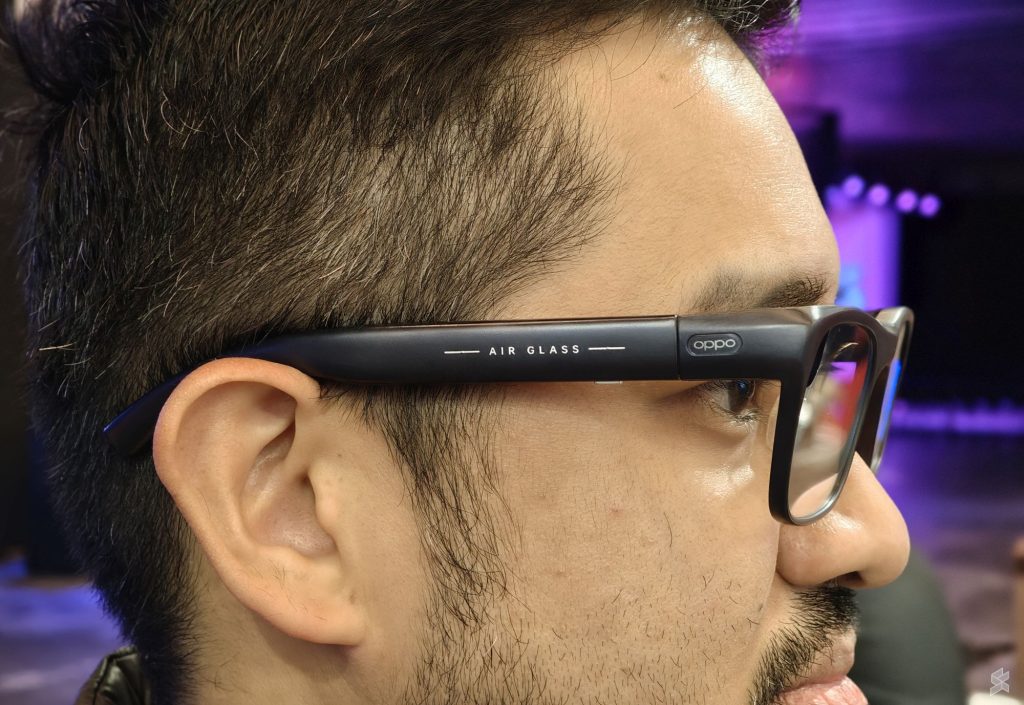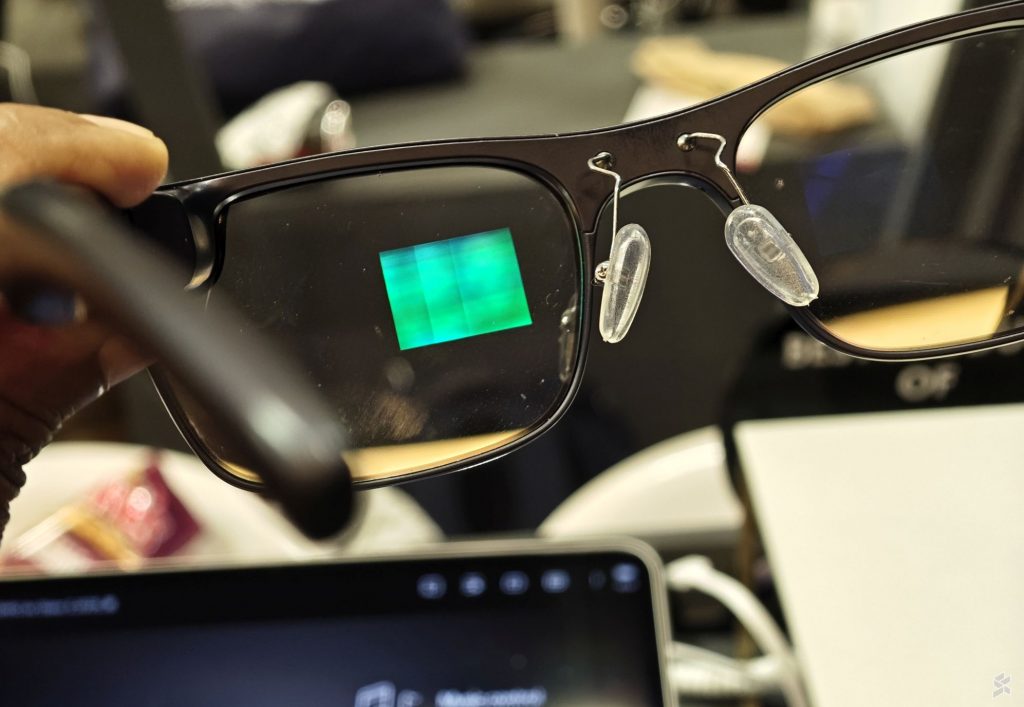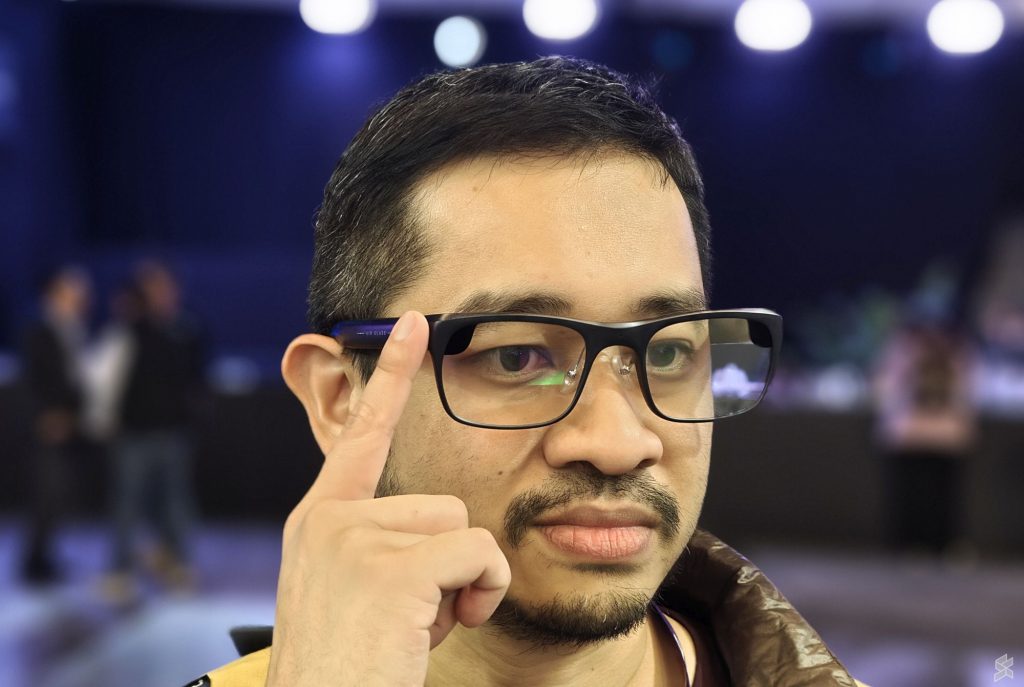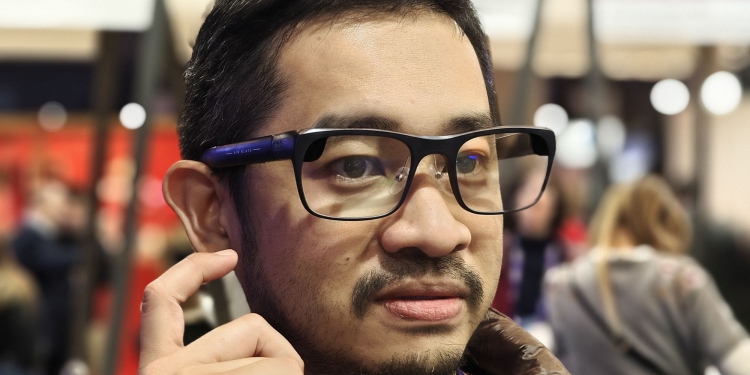During Mobile World Congress 2024 (MWC 2024), Oppo showed off the Air Glass 3, its latest iteration of the Air Glass. Oppo says this is currently the world’s lightest binocular Augmented Reality (AR) glasses, weighing at just 50 grams. We managed to give the Air Glass 3 a go and I think this wearable is more useful than Ray-Ban’s Meta smart glasses.

In terms of design, it looks like a regular pair of glasses and they are comfortable for all-day use. The only way to tell this is a pair of smart glasses is the subtle OPPO logo and “Air Glass” printed on the sides.
While there is no built-in camera like other smart glasses, the Air Glass 3 has displays embedded in each of the lenses to provide an overlay display in full colour. Oppo says the glasses feature a self-developed resin waveguide with a refraction index of 1.70. The display has a brightness uniformity of more than 50% and a peak brightness of more than 1,000 nits. The screen only works one way so the other party won’t be able to see an illuminated patch on your glasses.

The Oppo Air Glass 3 is designed as a companion to your smartphone and it can be used to display notifications and upcoming appointments in your field of view. It’s just like having a live head-up display from a pair of normal-looking glasses.
The Air Glass 3 can also be used to show directions while running navigation, display photos, answer calls and even play music via the built-in speakers integrated into the temples of the glasses.
With AI gaining more prominence these days, the Air Glass 3 also features an integrated AI voice assistant which can provide answers right in front of you. Just tap lightly on the sides to prompt the AI voice assistant to get started with your question. You could think of it like having your very own JARVIS.
While the resolution of the display isn’t as high as a smartphone, it is more than good enough to display text and graphics. The perceived display area is quite compact to minimise possible distractions and it feels like having a smartwatch display floating in front of you. To navigate through the UI, you can swipe on the sides or at the top surface of the temple. There’s also a hard physical button underneath which turns the display on and off.
At the moment, the Oppo Air Glass 3 prototype only has about 30 minutes of battery life which is quite short. If Oppo intends to release this as a commercial product, we hope that it can last at least several hours of screen time without adding extra weight.

From our short moment with the Air Glass 3, we can see how this wearable can open up a lot of new possibilities for hands-free experiences. Imagine being able to navigate through a new city and get directions without looking down at your smartwatch or phone. For meetings or presentations, the AR glasses can double up as a discreet teleprompter. Meanwhile, if your hands are full, you can get answers displayed directly in front of you via AI assistance.








